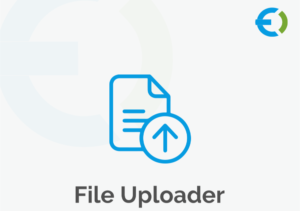In the competitive world of food delivery, creating a robust and user-friendly app is crucial for success. However, understanding the cost of building such an app can be complex, as various factors play a role in determining the final price. This article will explore the key elements that influence the cost of building a food delivery app and what you should consider before embarking on the development journey.
Factors that Affect Food Delivery App Cost
1. App Complexity and Features
The complexity of your app is one of the most significant factors affecting its cost. A basic food delivery app with essential features like user registration, restaurant listings, menu browsing, and order placement will cost less compared to an app with advanced functionalities.
Features that can increase the food delivery app cost include:
- Real-time order tracking: Implementing GPS tracking for delivery drivers requires additional development and integration efforts.
- Multiple payment options: Offering various payment methods, including digital wallets and in-app purchases, adds to the development cost.
- Push notifications: Keeping users informed about their order status, promotions, and updates requires a robust notification system.
- Loyalty programs: Integrating reward systems and discounts can also raise development costs.
2. Platform Selection: iOS, Android, or Both
The platform(s) you choose to launch your app on will significantly impact the cost. Developing an app for a single platform (iOS or Android) will be less expensive than creating a cross-platform app. However, targeting both platforms can help you reach a wider audience.
If you decide to go for a cross-platform app, you’ll need to account for additional costs related to testing and optimizing the app for different devices and operating systems.
3. UI/UX Design
User experience is critical for the success of a food delivery app. Investing in a clean, intuitive, and visually appealing design can attract and retain users. The cost of UI/UX design depends on the complexity of the design, the number of screens, and the level of customization required.
A well-designed app that offers a seamless user experience may cost more upfront, but it can lead to higher user satisfaction and retention, making it a worthwhile investment.
4. Backend Development
The backend is the engine that powers your app, handling data storage, server management, and integration with third-party services. A robust backend is essential for ensuring that your app runs smoothly, especially when dealing with high volumes of users and transactions.
The complexity of the backend, including database management, API integrations, and server maintenance, will influence the overall food delivery app cost. Cloud-based solutions can offer scalability, but they also come with ongoing costs.
5. Third-Party Integrations
To enhance the functionality of your food delivery app, you may need to integrate third-party services such as payment gateways, mapping and GPS services, social media logins, and analytics tools. Each integration adds to the development time and cost.
For instance, integrating with popular payment gateways like PayPal, Stripe, or Apple Pay requires compliance with security standards and additional coding, which can increase the overall cost of building a food delivery app.
6. Development Team Location
The geographical location of your development team can have a significant impact on the cost. Developers in North America or Western Europe typically charge higher rates compared to those in Eastern Europe, Asia, or Latin America.
While it may be tempting to choose a team based solely on cost, it’s essential to consider the team’s expertise, experience, and ability to deliver a high-quality product within your budget and timeline.
7. Timeframe for Development
The time it takes to develop your app will also influence the cost. A rushed project with a tight deadline may require additional resources, such as a larger development team or extended work hours, which can increase costs.
On the other hand, a longer development timeline allows for more thorough testing and refinement, potentially reducing the need for costly revisions later.
8. Post-launch maintenance and Support
The cost of building a food delivery app doesn’t end with its launch. Regular updates, bug fixes, and new feature implementations are necessary to keep your app competitive and functional. These ongoing maintenance costs should be factored into your budget.
Additionally, investing in customer support features, such as in-app chat or a helpdesk, can enhance user satisfaction but will also add to the overall cost.
9. Marketing and Promotion
While not directly related to the development process, marketing and promotion are crucial for the success of your food delivery app. Allocating a budget for digital marketing campaigns, social media promotion, and user acquisition strategies is essential for attracting users to your app.
A well-marketed app with a strong user base is more likely to succeed in the competitive food delivery industry, making this an important consideration when budgeting for your project.
Conclusion
The cost of building a food delivery app is influenced by a variety of factors, including app complexity, platform selection, design, backend development, and third-party integrations. By understanding these factors and working with an experienced development team, you can create a food delivery app that meets your business goals and provides a valuable experience for users.
Investing in quality development and ongoing support can ensure that your app remains competitive and successful in the long term. Partnering with a reputable food delivery app development company can help you navigate these complexities and deliver a product that stands out in the crowded market.



